















|
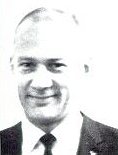
|
Edwin E. Aldrin, Jr. (b. 1930)
A West Point graduate, Aldrin did his MIT doctoral thesis on manned orbital rendezvous. He flew with Lovell in Gemini 12 and set foot on the Moon as lunar module pilot on Apollo 11. A former combat pilot (66 Korean missions), Aldrin left the space program to command the Air Force Test Pilot School. Now retired from the military, he is a consultant to firms engaged in advanced technologies. |
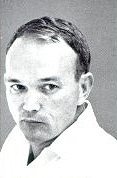
|
Michael Collins (b. 1930)
A West Point graduate and test pilot, Collins flew on Gemini 12 and walked in space. On the historic Apollo 11 flight to the Moon, he commanded the Columbia in orbit above the lunar surface. A brigadier general in the Air Force Reserve, with some 266 hours of space flight, Collins is now the Director of the Smithsonian Institution's National Air and Space Museum in Washington, D.C. |
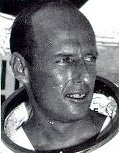
|
Charles Conrad, Jr. (b. 1930)
Princeton engineering graduate Conrad became a naval aviator and test pilot. He flew aboard Gemini 5 and Gemini 11, and was spacecraft commander in Apollo 12 and again in Skylab 2. Since his retirement from the Navy in 1974, Conrad has served as a vice president of the American Television and Communication Corporation. |
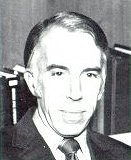
|
Edgar M. Cortright (b. 1923)
An aeronautical engineer, Cortright joined the NACA Flight Propulsion Laboratory in 1948. Ten years later he helped lay the groundwork for NASA's formation and continued at Headquarters to plan and direct space programs, including those for scouting the Moon. Since 1968 Cortright has been Director of Langley Research Center, and has led in the development of the Viking Mars landings. |
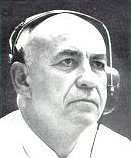
|
Robert R. Gilruth (b. 1913)
With two degrees in aeronautical engineering, Gilruth joined NACA's Langley Aeronautical Laboratory in 1937, becoming Assistant Director there in 1952. In 1958 he was named director of the Space Task Group and Project Mercury. When the STG became the Manned Spacecraft Center, Gilruth went to Houston as Director, and served from 1961 to 1972, leading the Gemini and Apollo programs. |
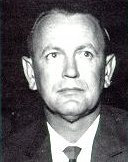
|
Christopher C. Kraft, Jr. (b. 1924)
Came to NASA through NACA, joining the Langley laboratory in 1945 and becoming director of Project Mercury flight operations in 1959. His contributions to Mission Control continued in his service as Director of Flight Operations for the Gemini and Apollo programs. He was made Deputy Director of the Manned Spacecraft Center in 1969, and Director in 1972. |
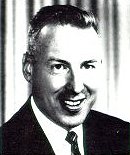
|
James A. Lovell (b. 1928)
An Annapolis graduate and test pilot, Lovell has flown around the Moon twice, first in Apollo 8, man's initial lunar flight, and then in Apollo 13. Earlier he flew in Gemini 7 and 12. Lovell worked on space science applications from 1971 to 1972 at Manned Spacecraft Center; he is now president of the Bay-Houston Towing Co. |
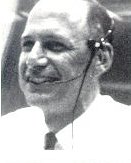
|
George M. Low (b. 1926)
Began his NASA career at Lewis Research Center in 1949. Named Chief of Manned Space Flight in 1958, and Deputy Director of Manned Spacecraft Center in 1964, he took over the Apollo spacecraft program in 1967. Low became NASA's Deputy Administrator in 1969. |

|
George E. Mueller (b. 1918)
Came to NASA from industry in 1963. There he had directed ballistic missile and space probe programs. Noted for his work in microwave measurement and in telemetry, he served as NASA's Associate Administrator for Manned Space Flight from 1963 to 1969, when he returned to industry. He is now Chairman and President of the System Development Corporation in California. |
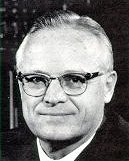
|
Homer E. Newell (b. 1915)
Was the Naval Research Laboratory's Science Program Coordinator on Project Vanguard - America's first scientific satellite. He joined NASA in 1958, serving in Headquarters as Associate Administrator for Space Science and Applications from 1963 to 1967. From 1967 to his retirement in 1974, Newell was NASA Associate Administrator. He is the author of many works on space sciences. |
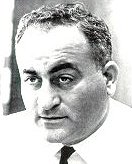
|
Rocco A. Petrone (b. 1926)
A West Point graduate, Petrone came to NASA in 1960. There he managed the activation of all Apollo launch facilities. He personally supervised the Apollo 11 launch. Named Director of the Apollo program in 1969 and of the Marshall Space Flight Center in 1973, Petrone became Associate Administrator of NASA in 1974. He now heads the National Center for Resource Recovery. |
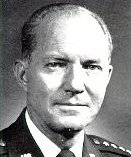
|
Samuel C. Phillips (b. 1921)
An electrical engineer, Phillips became Deputy Director then Director of the Apollo program in 1964, serving till 1969. Before that he directed the Air Force's Minuteman program. A World War 11 fighter pilot and former Director National Security Agency, Phillips, a four-star general, now heads the Air Force Systems Command. |
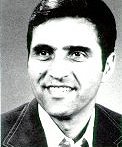
|
Harrison H. Schmitt (b. 1935)
A New Mexico geologist, Cal Tech and Harvard graduate, Schmitt became an astronaut/scientist in 1965, and went to the Moon as Apollo 17's lunar module pilot. Schmitt served as NASA's Assistant Administrator for Energy Programs during 1974 and 1975. |
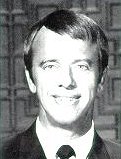
|
Alan B. Shepard, Jr. (b. 1923)
America's first man to journey into space, flying a Redstone-boosted Mercury in 1961. He was also the spacecraft commander on the Apollo 14 flight and landed on the Moon in 1971. Shepard has served as chief of the Astronaut Office and as a delegate to the United Nations' General Assembly in 1971. An Annapolis graduate and former test pilot, Shepard holds the rank of rear admiral. |
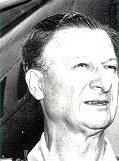
|
Robert Sherrod (b. 1909)
Noted foreign correspondent and editor (Time, Life, Saturday Evening Post, Sherrod is the author of five books on the military, including his monumental History of Marine Corps Aviation in World War II. He covered the battles of Attu, Tarawa, Saipan, Iwo Jima, and Okinawa, and later, the Korean and Vietnamese conflicts. For several years he has been working on a book about Apollo. |
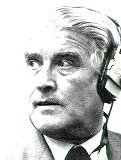
|
Wernher von Braun (b. 1912, d. 1977)
Came to the United States in 1945 to conduct missile research for the Army. He directed the Pershing and Jupiter rocket programs before leading work on the powerful Saturn. Von Braun was Director of the Marshall Space Flight Center from 1960 to 1970 and NASA Deputy Associate Administrator for Planning, 1970 to 1972. He is now a vice president with Fairchild Industries. |
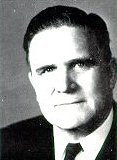
|
James E. Webb (b. 1906)
Prior to appointment as NASA Administrator in 1961 Webb, a lawyer, held major posts in government and industry. A Marine officer and pilot, he served as Under Secretary of State, as Budget Bureau Director, and as a corporate officer and director. Departing NASA in 1968, Webb resumed law practice in Washington, DC. |


